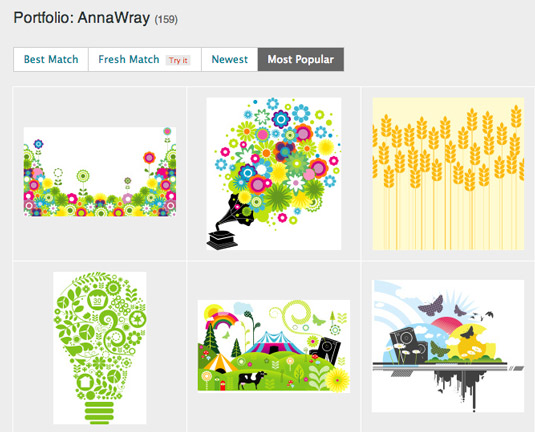5 things you need to become a successful illustrator
Do you have what it takes to make a career in illustration? Pro illustrator Anna Wray outlines what you need.
Do you dream of leaving your current job and working full-time as an illustrator? Well I've done it and so can you. Here, I'll outline five things you need to making a successful career as an illustrator. The rest is up to you...
01. Focus

There are no half measures when it comes to becoming an illustrator. Because you are most likely going to be self-employed, no one is going to motivate you other than you.
That requires self confidence and self knowledge. You need to know absolutely that you want to be an illustrator, if it's just half an idea or a vague plan you won't be able to stick at it in the long term.
It's your self belief and determination that will get you through the challenge of establishing yourself. Once you know what you want that's half the battle.
02. Adaptability

You will need to be able to adapt your way of thinking and illustrating to fit a clients brief who will often want to have input during the process of the illustration. There is a balancing act between keeping clients happy without compromising the integrity of the illustration (I sometimes got the balance wrong in the early days and was too embarassed to put the work on my website!).
As well as adapting to clients it pays to adapt your work to access different markets eg. The artist print market, apparel, stock illustrations, magazines, stationary, murals etc.
Often in between commissions I make money selling stock illustrations, which provides a regular monthly income, workshops and/or teaching also combine with illustrating fantastically well. The broader the application of your work the better as one area might dry up as another starts to takes off.
Get the Creative Bloq Newsletter
Daily design news, reviews, how-tos and more, as picked by the editors.
03. A network of friends and fellow creatives

The part of the day when you are working as an illustrator can be pretty solitary and to compound this quite often you do not meet your clients in person and are more likely to communicate through phone, email or Skype.
To counterbalance this it really helps to have a network of friends or fellow freelancers close by so you can catch up after work for a coffee or drink. If you don't know many creatives in your local area you can always join or set up a creative freelancer group and have regular meet-ups.
If you really don't like being alone while you work you can look out for a shared space - which brings me to number 4...
04. A good space

Most illustrators start of with a Mac in the corner of their bedroom or living room and that's ideal way to start as you don't have the stress of overheads as you become established.
After a while though you will want a separate place to work to keep work and life a little separate. If your lucky enough to have a garden studio or spare room that's great, otherwise there are many initiatives where local freelancers can rent a desk or space in a creative community which also has the added benefit of providing you with some office banter and social interaction.
There are many places to do freelance work. Websites like www.officegenie.co.uk and www.officebloc.co.uk are great places to look for workspaces. If all else fails I love to bring my sketchbook and laptop to my local bookshop or coffee shop to work.
05. Persistence and a thick skin
There are always going to be times when things go quiet and you quietly start to panic, at moments like this it is invaluable to be persistent. Everyday work towards getting more work and analyse your portfolio constantly. Do you need to create new work to suit a particular field that you are not getting any luck in? If you are getting rejected ask for feedback and act on it. It's your best education.
Constantly update your blog and post new work to others, create new work and don't let your website go stale. Often it's not the best work that is the most well known, it's the illustrators who work the hardest at marketing. Get on the phone, blog, email new people, set up new meetings, send stuff in the post, get an agent.
Just keep plugging away during the quiet times and things will slowly start to snowball. When, finally, you start to make a reliable living as an illustrator, nothing beats the creative freedom and liberation that comes with being your own boss. Your time is your own, no longer are you a small cog but the master if your own creative destiny. You will never look back!
Words: Anna Wray
Anna Wray is an illustrator/author and a visiting lecturer on the Ba(Hons) Illustration at Cambridge School of Art.

Thank you for reading 5 articles this month* Join now for unlimited access
Enjoy your first month for just £1 / $1 / €1
*Read 5 free articles per month without a subscription

Join now for unlimited access
Try first month for just £1 / $1 / €1

The Creative Bloq team is made up of a group of art and design enthusiasts, and has changed and evolved since Creative Bloq began back in 2012. The current website team consists of eight full-time members of staff: Editor Georgia Coggan, Deputy Editor Rosie Hilder, Ecommerce Editor Beren Neale, Senior News Editor Daniel Piper, Editor, Digital Art and 3D Ian Dean, Tech Reviews Editor Erlingur Einarsson, Ecommerce Writer Beth Nicholls and Staff Writer Natalie Fear, as well as a roster of freelancers from around the world. The ImagineFX magazine team also pitch in, ensuring that content from leading digital art publication ImagineFX is represented on Creative Bloq.
